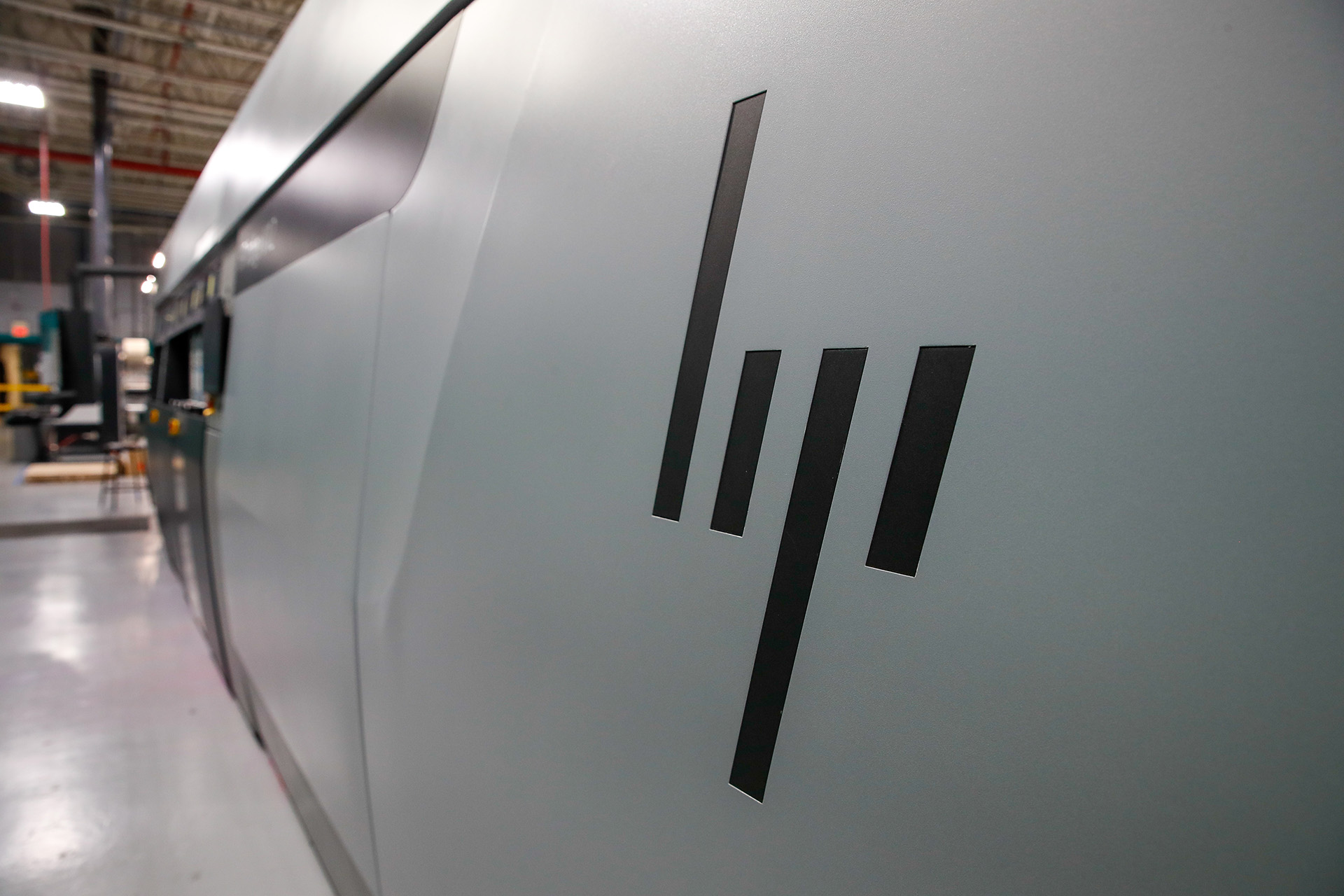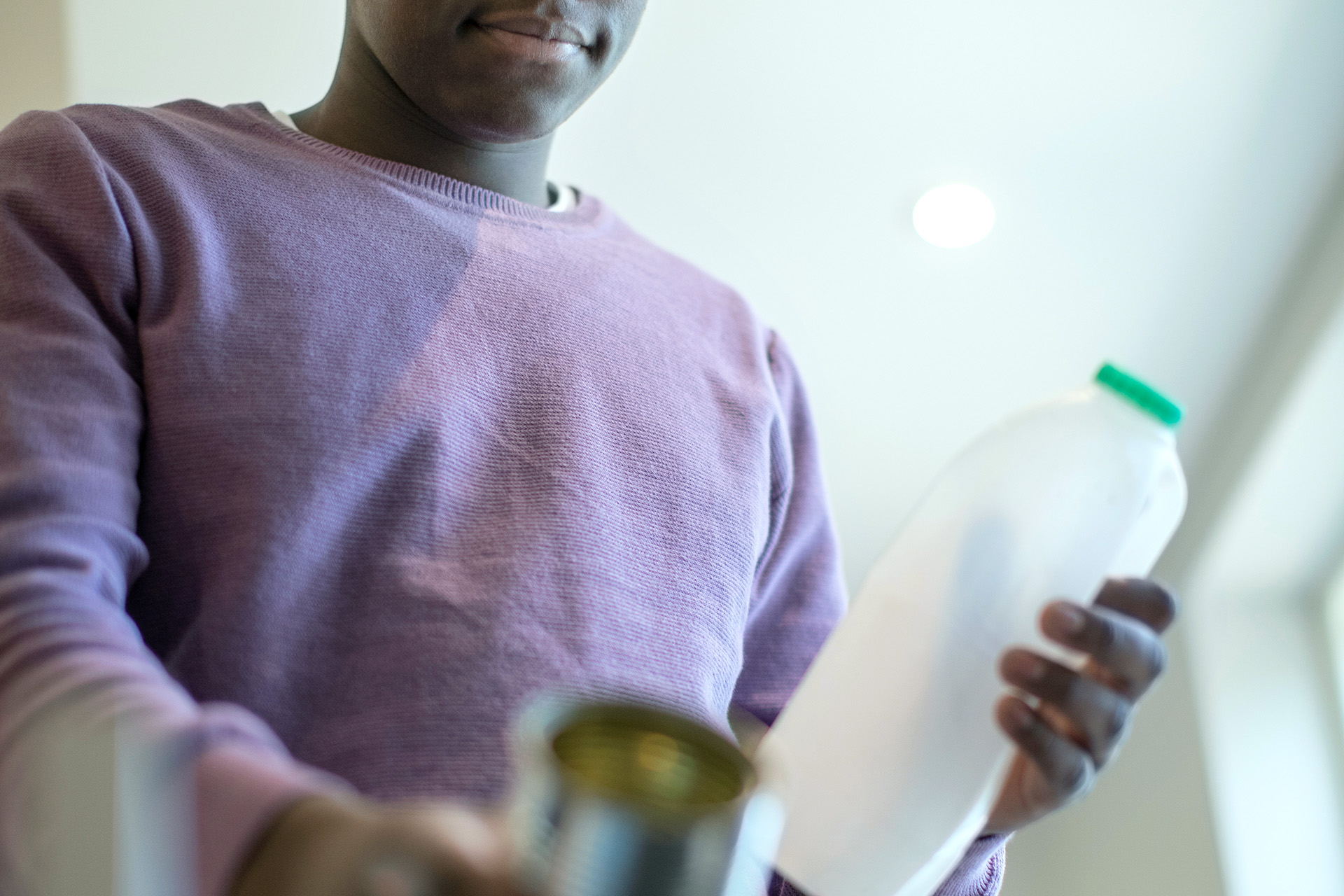Flexo, digital, or rotogravure label printing? What’s the difference, and what capabilities and limitations does each label printing process have?
Flexographic printing
Flexographic printing, also known as ‘flexo,’ is the most common printing platform for labels and packaging. Flexo is highly versatile and is ideal for printing both large areas of color and fine details.
How it works
Flexo label printing starts with imaging your design onto a printing plate. A plate must be made for each color needed in the design. These plates are then set up on the printing press. On a flexo press, there are a series of rollers grouped together. Each set of rollers prints one color. As material is fed through each group, ink is carried from an ink pan to an anilox roll, and then to the printing plate. The printing plate transfers the ink onto the web. An impression cylinder keeps tension in the web to ensure a clean print. Depending on the number of colors in your design, this process repeats across multiple rollers through the press.
Laminating, embossing, and other embellishment processes can be integrated throughout the press. Rotary die cutting takes place at the end of the press when converting pressure sensitive material.

What makes the flexo printing process right for me?
- Wide range of design possibilities
- Embellishments are easily integrated in-line
- Printing plates are more flexible and less expensive
- Ideal for high-speed, medium to high-volume runs
Digital printing
Digital printing is the fastest-developing printing platform for labels and packaging. Today’s digital presses deliver vibrant color, crisp detail, and photo-quality graphics while leveraging variable data and the ability to support SKU proliferation. In the beginning, digital was used by conventional printers as a solution for short-run process printing work. Strategic adopters of the technology leverage the unique ability of digital printing to provide photo-quality images and/or variable data across an unlimited number of SKUs.
How it works
Unlike flexo or rotogravure, digital print doesn’t require statically imaged printing plates or cylinders. Instead, digital uses rapidly transferred electronic signatures to temporarily engrave the desired printed images to an imaging plate. From the imaging plate, the images are transferred to an imaging device. A separate imaging device for each ink color deposits the appropriate ink color (C, M, Y, K, as well as O, V, G, and white) in a specified order onto a blanket. The blanket then transfers the build-up of ink layers onto the substrate.
Digital print requires some type of protective coating or lamination, but all finishing and embellishments are done offline from the digital press.

What makes the digital printing process right for me?
- Unlimited print customization
- Quick response and on-the-fly graphics changes
- Runs to meet your inventory needs on slow and fast movers
- Variable content printing and sequential numbering
- Low to no setup costs
- Press proofs on actual material – what you see is what you get
Rotogravure printing
Rotogravure printing is designed for extreme long-run and repeatability. It delivers a high-opacity print and is excellent at achieving half-tone and vignette reproduction. It is ideal for flagship lines that run without significant changes.
How it works
Instead of a printing plate, a rotogravure press uses laser-etched cylinders. A printing cylinder must be made for each color needed in the design. The printing cylinders are mounted to a base on the press. As material runs through, ink carried by the printing cylinder is applied directly onto the web. To make sure just the design gets printed, a doctor blade removes ink from non-printing areas. An impression cylinder keeps tension in the material and ensures a good print. This process repeats based on the number of colors in the design.

What makes the rotogravure printing process right for me?
- Ideal for product lines that run without significant design changes
- High speed and repeatability
- Vignettes and halftone reproduction
- Most economical high-volume runs
As with any print project, there are pros and cons in choosing the different print methods outlined above. You can achieve similar designs with each one. However, cost, complexity, embellishments, run size, and many other factors can steer you to the best choice for your brand. As you expand your brand, we can scale different print methods to meet your needs. Whether you’re a small startup or a large CPG, we can meet you in your journey and help you print a more vibrant future!


